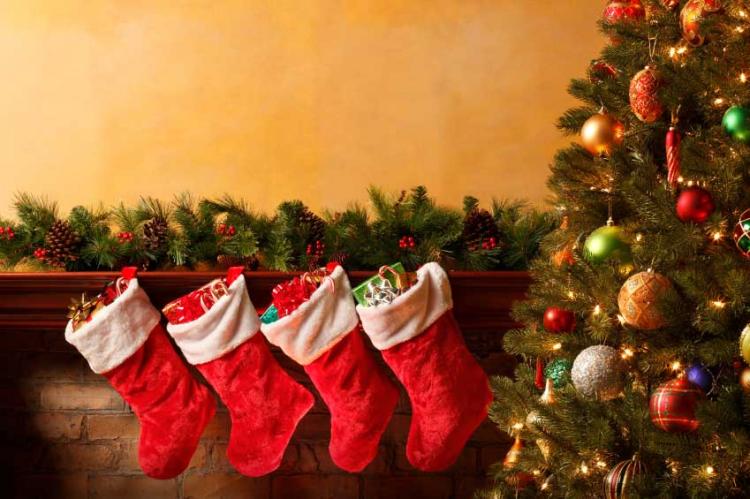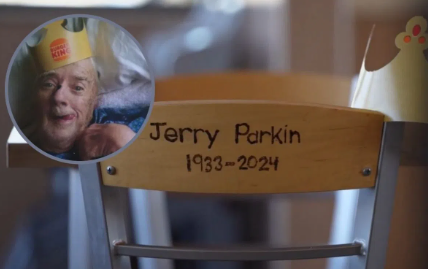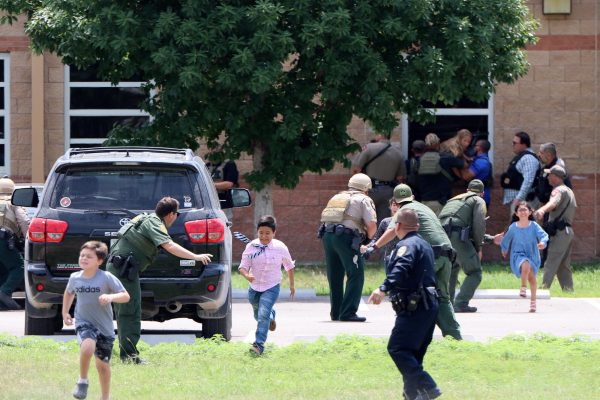The evolution of Christmas
Christmas is celebrated around the world–by more than 2 billion people in more than 160 countries–but how did this holiday come to be?
The most straightforward explanation is that Christmas is the celebration of the birth of Jesus Christ, who Christians believe to be the son of God. But how did Jesus Christ’s birth turn into a holiday in which we exchange gifts, decorate trees, and receive presents from a jolly man named Santa?
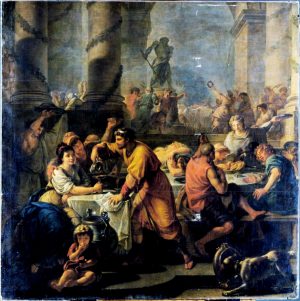
Let’s start with Saturnalia, one of the first recorded holidays that may have inspired Christmas traditions. History Today states that public banquets and celebrations were held as early as 217 BC. As stated by SimpleToRemember, Roman pagans first introduced the holiday of Saturnalia, a week – period of lawlessness celebrated between December 17-25. The dates coincided somewhat with the winter solstice. During this period, Roman courts were closed, and Roman law dictated that no one could be punished for damaging property or injuring people during the week-long celebration. Romans spent this work-free time gambling, feasting, and enjoying entertainment. Each Roman community also selected a victim whom they forced to indulge in food and other physical pleasures throughout the week. At the festival’s conclusion, December 25th, Roman authorities believed they were destroying the forces of darkness by sacrificing a man or woman.
But Saturnalia also has many parallels with current Christmas traditions. History Today explained that it was “a time for feasting, goodwill, generosity to the poor, the exchange of gifts, and the decoration of trees.” Many believe that Saturnalia is the basis for many of the Christmas traditions that do not link clearly to the birth of Christ.
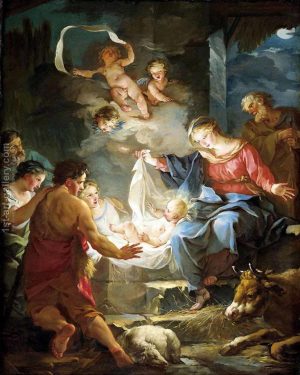
The earliest known reference to commemorating the birth of Christ on December 25th is in the Roman Philocalian calendar of AD 354, according to History Today. Some say the dates being the same is a coincidence. Christians chose the date based on predictions of when Jesus was born. But some theorists and historians think the Roman leaders chose December 25 specifically in an effort to replace the pagan holidays (as Eastern Orthodox Christians celebrate on January 6.)
So Saturnalia explains the origin of some holiday traditions, but where did Santa come from?
 Santa Claus originated in Holland after a Saint named Nicholas gave away his fortune to help the poor. According to The History Channel, a real Christian Monk named Nicholas who lived around 300 AD is said to have given away all of his inherited wealth to helping the poor and sick. Nicholas was eventually named a saint, and over many years, Nicholas’s popularity spread and he became known as the protector of children and sailors. His feast day is celebrated on the anniversary of his death, December 6. This was traditionally considered a lucky day to make large purchases or to get married.
Santa Claus originated in Holland after a Saint named Nicholas gave away his fortune to help the poor. According to The History Channel, a real Christian Monk named Nicholas who lived around 300 AD is said to have given away all of his inherited wealth to helping the poor and sick. Nicholas was eventually named a saint, and over many years, Nicholas’s popularity spread and he became known as the protector of children and sailors. His feast day is celebrated on the anniversary of his death, December 6. This was traditionally considered a lucky day to make large purchases or to get married.
After the Protestant Reformation Nicholas maintained a positive reputation, especially in Holland. The Dutch called Saint Nicholas Sinterklaas, and when they colonized parts of what are now New York, they brought the pronunciation and the tradition with them. Eventually the December 6 festival was rolled into the Christmas celebrations at the end of the month.
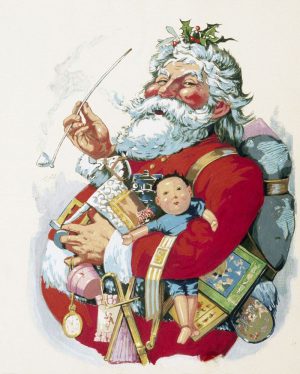
A few other things shaped Saint Nicholas into the version of Santa Claus we now know. In the 1820 poem “An Account of a Visit from Saint Nicholas” by Clement Clarke Moore (better known as “T’was the Night Before Christmas”), he is described as a jolly, heavy man who comes down the chimney to leave presents for deserving children. This poem also created the idea of him driving a sleigh pulled by flying reindeer.
About 60 years later, the cartoonist Thomas Nast added to the Saint Nicholas legend with an 1881 drawing of Santa as wearing a red suit with white fur trim. The cartoons were actually political propaganda for the Civil War according to the Smithsonian.
You may have also heard Santa referred to as Kris Kringle. According to Michael Solow with Learning Liftoff, in the 1500s, Martin Luther wanted to discourage the figure of St. Nicholas because he believed praying to any saint was against Scripture. So Luther introduced the idea that the “Christkind” would secretly come on Christmas Eve to bring presents to all good children. Solow explains, “Christkind was modified to Kriss Kringle in the 1840s and became a popular nickname in some countries for Santa Claus.”
 In Germany today, most families still celebrate that the Christkind brings presents rather than Santa. Another big part of the Christmas celebrations in Germany is Advent. Advent is a celebration of Christian holiday and nativity and marks the beginning of the Christmas season. According to WhyChristmas.com, several different types of Advent calendars are used in Germany. One is made of cards that are used in many countries, there are ones made out of a wreath of Fir tree branches with 24 decorated boxes or bags hanging from it. Another type is called a ‘Advent Kranz’ and is a ring of fir branches that has four candles on it.
In Germany today, most families still celebrate that the Christkind brings presents rather than Santa. Another big part of the Christmas celebrations in Germany is Advent. Advent is a celebration of Christian holiday and nativity and marks the beginning of the Christmas season. According to WhyChristmas.com, several different types of Advent calendars are used in Germany. One is made of cards that are used in many countries, there are ones made out of a wreath of Fir tree branches with 24 decorated boxes or bags hanging from it. Another type is called a ‘Advent Kranz’ and is a ring of fir branches that has four candles on it.
Clearly, Christmas celebrations changed drastically from the Saturnalia winter solstice festivals of 200BC to the Christian celebration in 300AD and eventual addition of Santa Claus nearly 1500 years later. But how much has Christmas changed in just the last century?
 In an interview with my 93-year old great grandmother I found out about her Christmas traditions from when she was a child and when she had children of her own. She said that when she was younger she hung up stockings to receive fruit as a treat. She remembers that she had a doll which she got on Christmas Eve from her mother as a special treat. Children might receive just one or two gifts. The tree was brought on Christmas Eve from Santa and had been decorated by Santa as well. When she got older her mother and father had decorated it, but always on Christmas Eve. Even when she had kids of own her husband and children decorated the tree while she cooked and baked for Christmas Eve dinner. On Christmas Eve she used to have huge parties in which she cooked for up to 100 people, and “all plates and glasses were filled with food and love.”
In an interview with my 93-year old great grandmother I found out about her Christmas traditions from when she was a child and when she had children of her own. She said that when she was younger she hung up stockings to receive fruit as a treat. She remembers that she had a doll which she got on Christmas Eve from her mother as a special treat. Children might receive just one or two gifts. The tree was brought on Christmas Eve from Santa and had been decorated by Santa as well. When she got older her mother and father had decorated it, but always on Christmas Eve. Even when she had kids of own her husband and children decorated the tree while she cooked and baked for Christmas Eve dinner. On Christmas Eve she used to have huge parties in which she cooked for up to 100 people, and “all plates and glasses were filled with food and love.”
My great-grandmother had never heard of traditions like White Elephant or Elf on the Shelf. There were no Black Friday or Cyber Monday sales with door-busters. Christmas was celebrated just for a few days rather than the month-long (or more) commercial celebration of today.
Although the origins of Christmas seem to simply point to the birth of Jesus in a manger, a closer look reveals that our current traditions pull from several cultures and ideas through history. Whether it was the Roman’s Saturnalia, the Dutch Sinterklaass, or the Christian celebration of the nativity, the common thread has always been togetherness, celebration, and giving.


